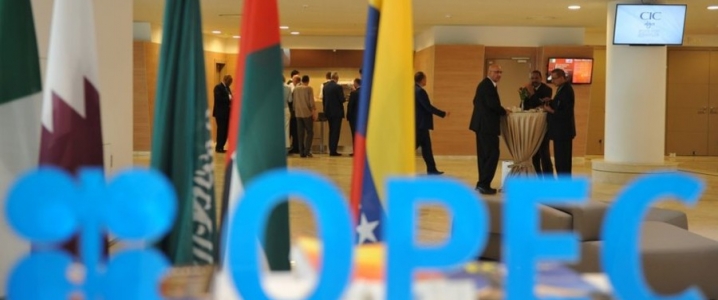
Oil prices spiked on Friday on news from Vienna.
OPEC+ managed to pull off an eleventh-hour agreement, checking all the boxes after a contentious set of meetings. There were a lot of competing interests at play, but the agreement offers a little bit of everything, enough for all parties to walk away satisfied.
The headliner is the 1.2 million-barrel-per-day (mb/d) cut beginning in January, with a review scheduled for April. OPEC will shoulder 800,000 bpd of the total, and non-OPEC countries will take on the other 400,000 bpd. The baseline used to measure the cuts is October production levels.
The cut is larger than some analysts had expected, especially given the rumors swirling on Thursday about a cut of around 1 mb/d. In fact, one could argue that the group cleverly managed market expectations, lowering them on Thursday only to surprise the market with a larger cut on Friday. Prior to the meeting 1.2 mb/d might have been considered a middle-of-the-road cut, but after the seemingly tumultuous set of meetings on Thursday and early Friday, a 1.2 mb/d cut ends up looking like a highly successful result.
Iran had held up the talks early Friday. Saudi Arabia pushed for them to agree to a symbolic cut, an odd position given that Iran’s output at this point is far below capacity and far below its prior ceiling. Iran, with good reason, argued that it should not have to sign on to any cuts, especially since sanctions are likely going to curtail output even further in the months ahead.
The rumors on Friday were that the holdup could sink a deal, but that was never going to be the case. It’s extremely hard to imagine Saudi Arabia walking away from a deal that included meaningful cuts from other producers just because Iran wouldn’t symbolically cut their output.
Ultimately, the result was a quirky one. All countries appear to be participants in the deal, but there won’t be country-specific quotas. Iran did not receive an official “exemption,” some OPEC officials argued, even as the Iranians claimed they did. Other officials said that there would be “special considerations.” This point is a matter of splitting hairs – Iran’s production is likely to fall in the coming months; it doesn’t really matter what they call it. That’s also why this issue was not going to be the thing that sunk the entire deal.
Oil prices spiked on the news, with Brent up around 5 percent immediately after the agreement was announced.
Russia, as expected, played a pivotal role in the deal, and its willingness to go along with a larger-than-expected cut was the key factor in the 1.2 mb/d reduction (although Russia’s precise contribution was not known at the time of this writing).
The deal can be called a success for two reasons. First, it takes 1.2 mb/d off of the market beginning in January, which will go a long way to erasing the surplus. Second, it removes a great deal of uncertainty about what to expect in the near future. Oil prices have been all over the map in the last few months, with Saudi production surging at a time when U.S. shale was also defying expectations. Now, it’s reasonable to assume that any surplus or deficit won’t be so large as to lead to dramatic price swings, at least in the short run.
However, the one remaining piece of uncertainty is how, or if, the U.S. government will react. President Trump has repeatedly demanded low oil prices, and tweeted as recently as Wednesday to that effect. Typically, OPEC would not be all that sensitive to Trump’s demands, but Saudi Arabia is reeling after the international outrage over the murder of Jamal Khashoggi. A bipartisan movement in Washington is upping the pressure on Riyadh, and Trump has been one of the few friends Saudi Arabia has left.
If oil prices rise too much, Trump might lash out and dump the Saudis, although what that means in practice is very much unclear. Due to extreme budgetary pressure from low oil prices, Saudi Arabia had no choice but to risk Trump’s ire and push for meaningfully supply curbs.
For now, OPEC+ is likely patting themselves on the back. They reached an agreement that is mostly acceptable to everyone, oil prices are up, the surplus will narrow significantly and uncertainty is greatly diminished.
Notably, the agreement calls for a review in April. The timing is not coincidental – U.S. waivers granted to eight countries importing Iranian oil expire in May. By April, everyone will know much more about what direction Washington intends to go in, and how much oil Iran will lose. If Iranian exports are rapidly falling to zero, OPEC+ would have time to unwind the production cuts.